American Public University (APU) is headquartered in Charles Town, West Virgina (not to be confused with Charleston), a 1.4 square mile hamlet of less than 3,000 people. APU is Wal-Mart's chosen education partner. Wal-Mart claims that a survey of 32,000 of its employees revealed a strong preference for online education. The Times piece isn't completely amiss. One can deduce that Wal-Mart's low-paid workforce (averaging under $12/hour) will bear the brunt of their education costs. This puts the onus on Wal-Mart to procure cost-effective education for its workforce.
Charles Town is most famous as the place where John Brown was tried and hanged, in 1859. Almost 16% of its population lives below the poverty line. Charles Town has no infrastructure or geographic positioning relative to higher education. A Google Earth view of Charles Town suggests that APU may be located in a residential structure (Google Street View isn't available for Charles Town):
Click image to view full-size
To be fair, APU says its back office operations are located in Manassas, Va. The point on headquarters location pertains to the unlikely confluence of higher-education institutional leadership in a small West Virginia town (that otherwise has nothing to do with higher education).
The times article claims APU has 70,000 students while APU's own website says "...more than 50,000 students in 100 countries.." (a discrepancy of 40%). American Public University is owned by American Public Education, Inc., a NASDAQ listed corporation. The Times article doesn't mention this. From the APEI website:
American Public Education, Inc. (NASDAQ: APEI) is a leading provider of online post-secondary education focused primarily on serving the military and public service communities. American Public University System (APUS), wholly owned by APEI, comprises two universities: American Military University and American Public University (APU)....APUS serves more than 63,800 adult learners worldwide......In 2002, American Public University was founded.
APU is only eight years old? The Times didn't mention that, either. Based on APEI's financial statements, explosive growth over the past few years has created a cash machine:
- Revenue grew over 5x from 2005 to 2009.
- 2009 revenue was $148 million
- 2009 after-tax margin was 16%
- 36% return on equity
- 2010 1st quarter revenue grew 43% over 2009
- 2010 1st quarter cash flow doubled over 2009
Purely online education has a well-earned reputation for recruiting abuse, student loan fraud and lack of academic rigor. Accreditation and academic worth do not correlate. There are twelve decidedly mixed reviews of American Public University here from current and former students. This sample alone isn't enough to provide a basis for conclusions but the negative comments have an uncomfortable ring of truth.
University of Phoenix is the big gun of online colleges. It grew explosively in its early years and was subsequently the target of lawsuits and investigations into abuse and fraud. According to this NPR piece, U of Phoenix anticipated an $80 million fine only last November. Comments posted by current and former students to the NPR piece offer the same disquieting mix of support and derision, in greater volume, with negative comments reinforcing lack of academic rigor as a primary failing. This former U of Phoenix employee has some damning things to say.
U of Phoenix is not directly connected to APU but its history, similar business model and APU's stellar growth trajectory beg some questions, such as: how did APU grow so fast? The Times wasn't interested in such inquiry and we are left wondering if APU offers genuine education at a fair price.
The core problem lies in this statement: "With the work credits and tuition discount, an associate’s degree for a Wal-Mart or Sam’s Club cashier (from APU) would cost about $11,700 and a bachelor’s degree about $24,000". The Times reporter (or editor) lacked the sense to put a $12 thousand Associate's degree in context. It's doubtful that any Times staffers have ever attended a community college. Very few of them likely attended a public university. An $11,700 Associate's degree must look like a bargain to someone who dropped $200,000 on a degree from Columbia.
This image points to the problem and perhaps explains some of APU's revenue growth.
APU charges $250 per credit hour, for online-only instruction! Wal-Mart employees will pay 15% less ($212.50), which explains why APU's stated price for a bachelor's degree is $30k while the Times quoted $24k.
Wal-Mart estimates that half of its 1.4 million domestic employees are high-school graduates. Given their average pay and Wal-Mart's modest level of support in the new program, the only education options otherwise within reach for most of these 700,000 potential college students is the nearest community college. Therefore, The Times should have compared APU's pricing to community colleges. Such comparison would determine if Wal-Mart had truly acted in the best interests of its employees.
Community Colleges are a tried and true model, most have decades of experience turning out graduates who are qualified for careers in technology, health care, business roles, law enforcement or for transfer to a bachelors program. Community Colleges offer flexible scheduling and online education options. They are the original evening education model. The President is a believer and this piece in Slate nails the reason: community colleges have succeeded despite a long-running dearth of Federal support. The $12 billion program announced last year works out to roughly $10 million per school.
Community colleges are also cost-effective, as shown by these examples:
- Atlanta Technical College (Georgia) - $45 per credit hour (full-time)
- Harford County College (Maryland) - $77 per credit hour
- National average for 987 public community colleges - $85 per credit hour
- Cincinnati State Technical and Community College (Ohio) - $89 per credit hour
- Genessee Community College (New York) -$113 per credit hour (full-time)
- Nashville State Community College - $117 per credit hour
- Ocean County College (New Jersey) - $122 per credit hour
- Average community college cost - $85 per credit hour
- APU's discounted rate for Wal-Mart employees - $212 per credit hour
This post identified key facts that The Times missed. If the journalist had invested 1-2 more hours, The Times could have benefited from public interest in an expose of (take your pick):
- "Wal-Mart's High Price for Employee Education"
- "Wal-Mart Prices Education Out of Employee Reach"
- "Low-Prices Always? Not for Wal-Mart Employees"
UPDATE 1: The Washington Post weighs in here, noting that "For-profit schools may be offering an educational alternative, but that choice often comes with crushing student debt..."
UPDATE 2: Score another win for WalMart. This blogger at theAtlantic gets taken, just like the New York Times.
UPDATE 3: The New York Times published a decent (but small) article that provides online university industry facts & figures, in anticipation of a series of congressional hearings. Senator Tom Harkin has issues a report which states that "profit-making colleges generally charge higher tuition than comparable public colleges, spend a large share of revenue on expenses not related to teaching, experience high dropout rates, and, in some cases, use abusive recruiting and debt management practices." Steven Eisman, a hedge fund manager, has prepared testimony for the hearings and calls the for-profit colleges “marketing machines masquerading as universities.”
UPDATE 4: The Times appears to be catching on to what may be a sensational story of fraud and exploitation, with coverage of a new GAO report. Several undercover operatives documented fraud and deception at 15 for-profit colleges. "...recruiters at four of the colleges encouraged prospective students to lie on their financial aid applications — and all 15 misled potential students about their programs’ cost, quality and duration, or the average salary of graduates...courses in massage therapy and computer-aided drafting that cost $14,000 at a California for-profit college were presented as good values, when the same courses cost $520 at a local community college". The GAO is releasing a video of undercover investigation.
UPDATE 5: The story continues to develop and some ugly outlines are beginning to emerge. This NY Times article provides a key data point:"In the 2008-9 award year, students at for-profit schools represented 26 percent of borrowers — but 43 percent of defaulters. The median federal loan debt for students earning associate degrees at for-profit institutions was $14,000.....Most community college students do not take out student loans". This means that high default rates are driven, at least in part, by "online educators" charging almost 3-times as much for an associates degree as does the average community college. Combined with years of reports of illegal sales tactics and education finance irregularities, this situation has acquired the odor of massive fraud.










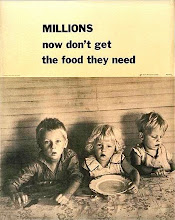


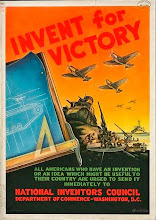

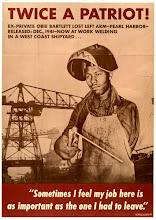

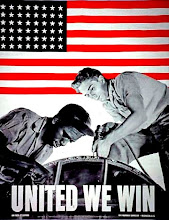



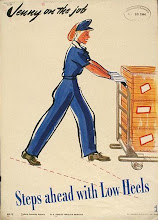
+breed+danger+6x8.jpg)



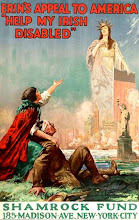




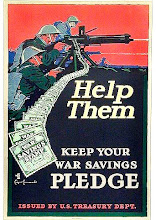
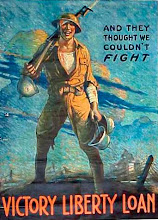

+5x7.jpg)


No comments:
Post a Comment